8 Best & Most Modern Drywall Texture Types for Your Home


Featured: Top Drywall Texture Styles
From classic Orange Peel to high-end Smooth walls—these are the textures homeowners and pros request most in 2025.
Prefer a joint-free, breathable wall finish?
Belka Cotton Plaster is hand-applied with water and a plastic trowel—no compressor or spraying. It creates a continuous, textile-like surface that feels warmer than painted drywall and helps soften room echo.
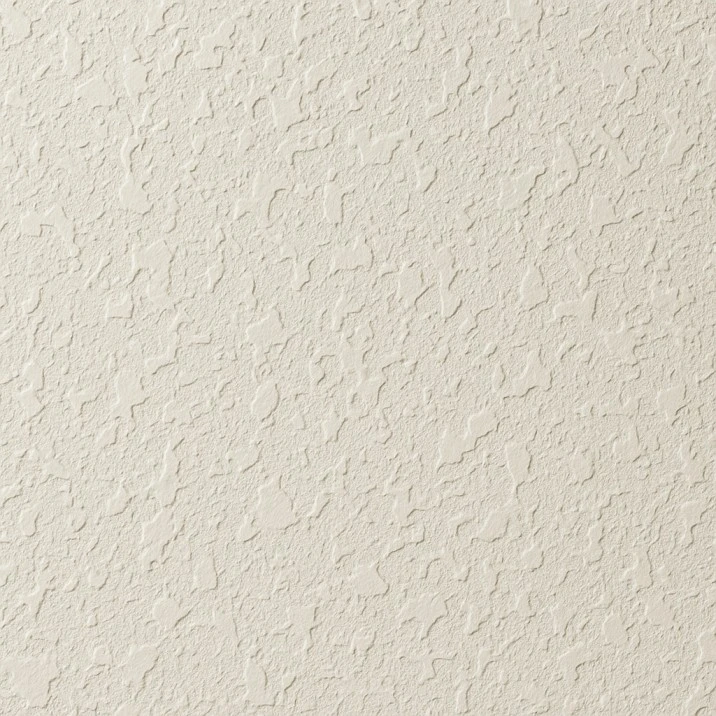
Knockdown
Spray then flatten: a softened, organic pattern favored in remodels and open plans. Diffuses light and blends past repairs well.

Orange Peel
Fine, pebbled spray; subtle and quick—widely used in new builds and rentals for speed and familiarity.
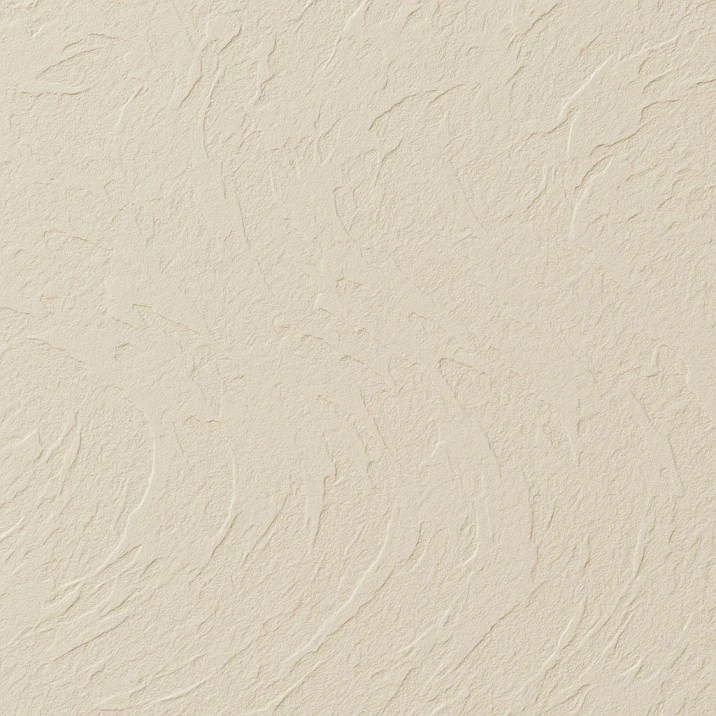
Skip Trowel
Hand-troweled airy islands and movement—great for modern-rustic accents where you want character without heaviness.
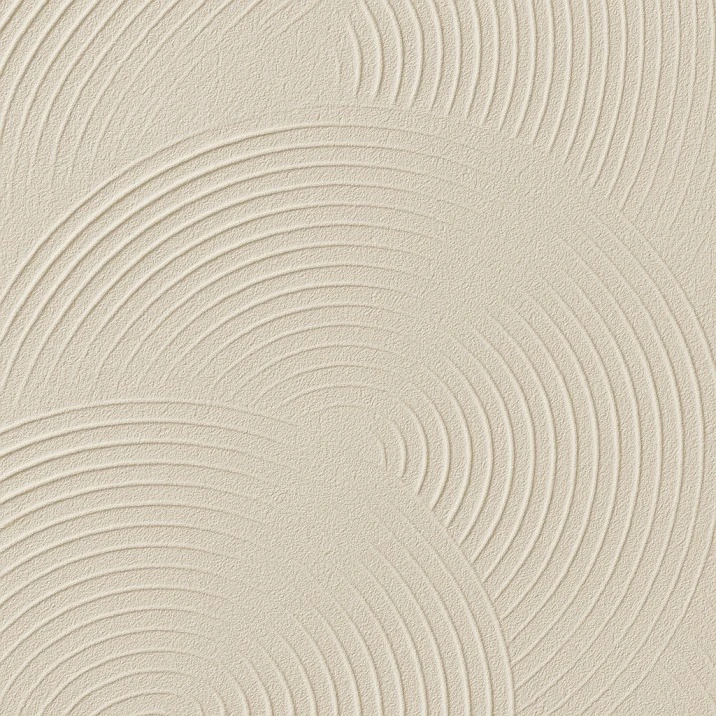
Comb
Linear or half-fan grooves made with a toothed tool—ideal for graphic feature walls with rhythmic texture.

Sand Swirl
Soft circular brush patterns with sanded compound—excellent for large ceilings where glare and seams show easily.

Belka Cotton Paint
Soft natural cotton finish providing seamless texture and warmth. Eco-friendly, breathable, and crack-resistant—ideal for walls and ceilings that need both beauty and insulation.
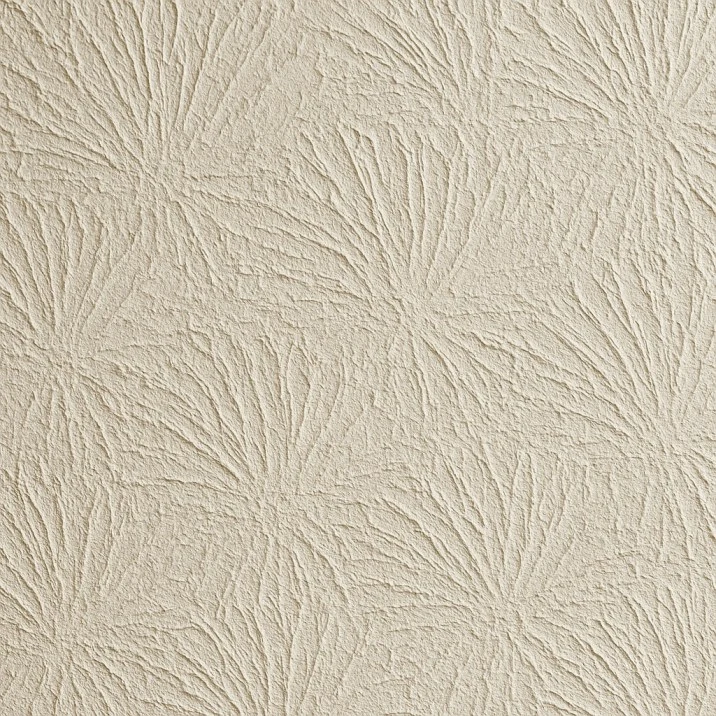
Slap Brush (Stomp)
Characterful radial brush marks—from light to heavy. Great for covering patchwork without specialized equipment.
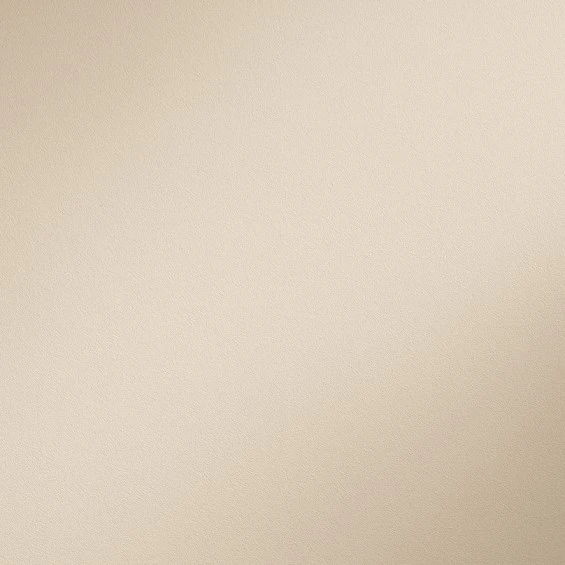
Smooth (Level 5)
Ultra-smooth, paint-ready minimalism. The most contemporary look—least forgiving to surface defects and lighting.
Drywall Texture Comparison (Quick Reference)
| Texture | Best For | Hides Flaws | Tools | DIY | Time | Cost |
|---|---|---|---|---|---|---|
| Knockdown | Walls/Ceilings | High | Hopper gun + trowel | 3/5 | Medium | Medium |
| Orange Peel | Walls | Medium | Hopper gun / roller | 2/5 | Fast | Low–Med |
| Skip Trowel | Feature walls | Medium | Trowel | 3/5 | Medium | Medium |
| Comb | Accent walls | Low–Med | Toothed trowel/comb | 3/5 | Medium | Low–Med |
| Sand Swirl | Ceilings | Medium | Brush + sand mix | 3/5 | Medium | Medium |
| Slap Brush | Walls/Ceilings | High | Stomp brush | 2–3/5 | Medium | Low–Med |
| Smooth (Level 5) | Modern walls | Low | Knives + pole sander | 4/5 | Slow | Med–High |
| Prefer a seamless texture? | See Belka Cotton Plaster — a seamless, breathable wall texture that reduces dust and feels warmer than painted drywall. | |||||
Orange Peel vs Knockdown — Full Comparison
Two of the most requested drywall textures in the U.S. Use this section to choose the right look, effort level, and long-term maintenance for your space.
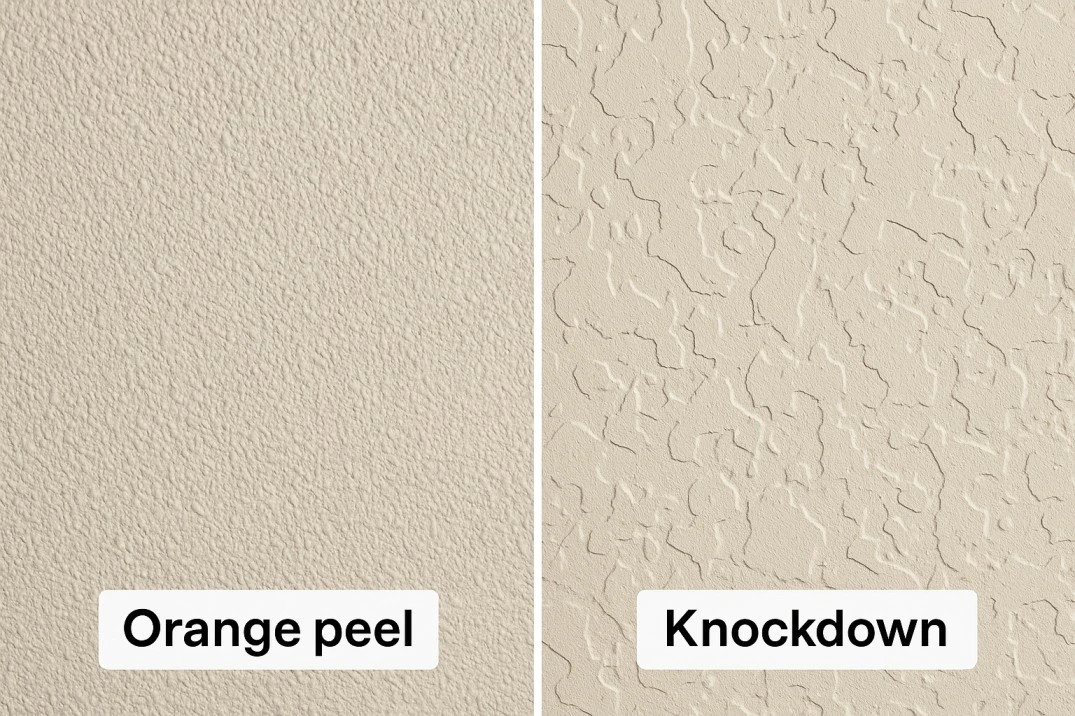
Key Factors — Look, Tools, Time, Cost, Repairs, Resale
A practical overview of what differs most in day-to-day use and during installation.
| Factor | Orange Peel | Knockdown |
|---|---|---|
| Look & design language | Fine, pebbled micro-texture; subtle at light settings. | Soft, flattened “islands”; slightly more upscale and forgiving. |
| Tools & skill | Hopper gun (or texture roller kits for small areas). | Hopper gun + knockdown knife/trowel; timing for the flatten pass matters. |
| Application time | Fastest overall (single spray stage). | Fast–Medium (requires a knockdown pass after partial set). |
| Relative cost | Low–Medium. | Medium (extra step/tools). |
| Hiding minor flaws | Medium — masks small taping/patching inconsistencies. | High — diffuses light; more forgiving on repairs. |
| Spot repairs & blending | Blends with light spray passes; keep nozzle distance consistent. | Blendable but timing-critical to match existing knockdown profile. |
| Best surfaces | Walls (new builds, rentals, quick refresh). | Walls and ceilings; popular in remodels and open plans. |
| Resale familiarity | High — widely recognized and expected in many markets. | High — commonly seen; reads slightly more premium in some regions. |
| Prefer no visible pattern? | See Part 4 for a seamless alternative that reduces dust/odor during application and helps mask minor substrate issues. | |
Quick Picks by Scenario
- Remodels with prior patches: Choose Knockdown for better flaw forgiveness and a soft, cohesive look across old and new areas.
- New builds / speed runs: Choose Orange Peel for the fastest close-out and subtle, familiar appearance.
- Rentals & frequent touch-ups: Orange Peel blends quickly with pre-mixed sprays; Knockdown works if you can time the flatten pass.
- Ceilings or harsh side-lighting: Knockdown tends to diffuse glare better; for large ceilings also consider Sand Swirl.
- Ultra-modern, pattern-free look: Evaluate Smooth (Level 5)—or the seamless alternative for joint-free warmth with less dust/odor.
FAQs (Orange Peel vs Knockdown)
Which is faster from prep to paint?
Orange Peel is typically fastest because it’s a single spray stage. Knockdown adds a timed flattening pass, which increases total time.
Which hides prior repairs better?
Knockdown is more forgiving, especially under side-lighting, because the flattened pattern diffuses reflections across patch transitions.
Which pairs better with modern paint colors?
Both work with matte paints. For the cleanest contemporary read, a light knockdown often feels calmer than a medium orange peel. For zero pattern, consider Smooth (Level 5) or the seamless alternative.
Best Textures for Walls vs Ceilings + Safety
Choose textures by surface, lighting, and repair profile. Then review essential U.S. safety guidance before disturbing legacy finishes.

Quick Guidance by Surface
- Walls (contemporary look): Smooth (Level 5) for the cleanest modern read. If substrate isn’t perfect, consider light Knockdown to soften reflections.
- Walls (repair-prone / patch history): Knockdown or Slap Brush for better flaw forgiveness and easier blending.
- Ceilings (large spans / glare): Sand Swirl or light Knockdown to break up seams and hotspots; many modern homes still prefer smooth ceilings.
- Speed and familiarity: Orange Peel remains a fast, subtle, and widely recognized option—especially on walls.
- Zero visible pattern: Evaluate Smooth; for a joint-free feel that can still mask minor irregularities without spraying/sanding, see the seamless alternative.
Walls vs Ceilings — Compact Picks
At-a-glance recommendations based on common homeowner priorities.
| Priority | Walls | Ceilings |
|---|---|---|
| Most modern look | Smooth (Level 5) | Smooth or light Knockdown |
| Hide minor flaws | Knockdown · Slap Brush | Sand Swirl · light Knockdown |
| Fastest close-out | Orange Peel | Light Knockdown |
| Easiest touch-ups | Orange Peel (spray blends) | Knockdown (timed blend) |
| Pattern-free & forgiving | Seamless alternative | Seamless alternative |
Safety & U.S. Regulations (Asbestos Note)
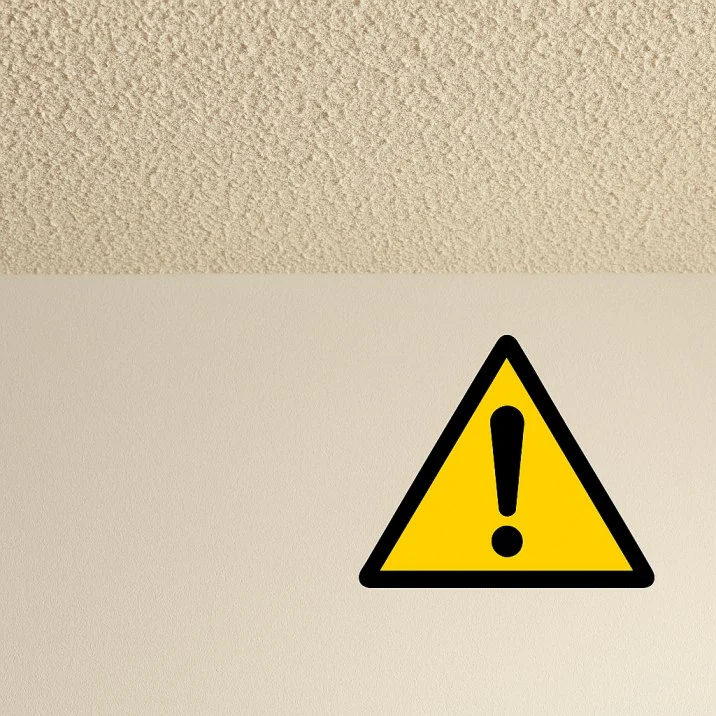
Important: Homes built before the late 1970s may contain asbestos in legacy textures (e.g., old “popcorn”). Before sanding, scraping, drilling, or demolition:
- Consult local/state requirements; many jurisdictions mandate lab testing and specific abatement protocols.
- Use certified testing/abatement services if asbestos-containing materials (ACMs) are suspected or confirmed.
- Wear appropriate PPE and control dust; do not dry-sand suspect materials.
When in doubt, do not disturb the surface until you’ve confirmed what it contains.
Prefer a Seamless, Warm & Acoustic-Friendly Finish? Meet Belka
Belka is a seamless, breathable wall finish applied with water and a plastic trowel—no compressor or spraying required. It creates a continuous, joint-free surface that feels warm to the touch, helps with room acoustics, and can mask minor substrate irregularities more gracefully than paint.
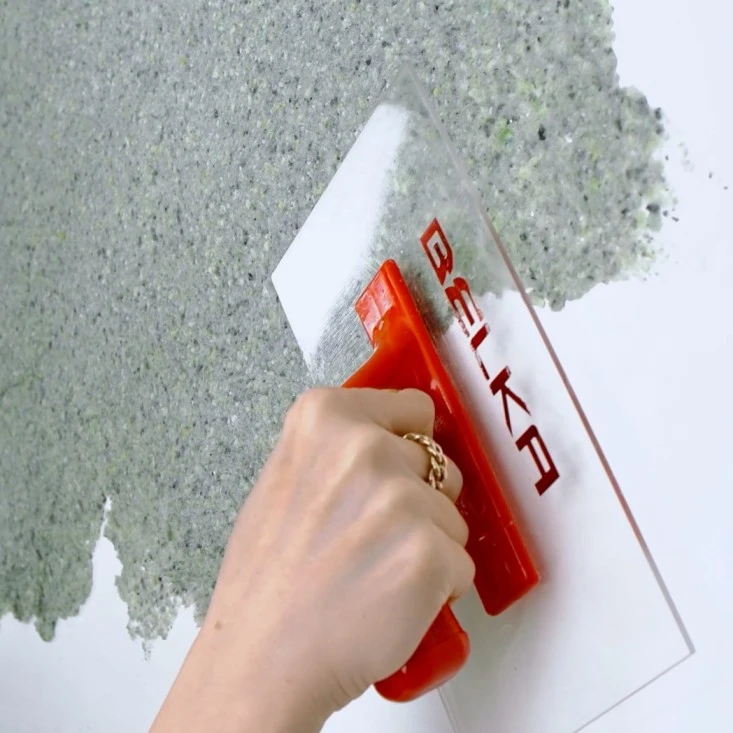
Hand-applied, no overspray
Mixed with water and applied by hand with a plastic trowel. Low odor and low dust—in-home friendly.

Seamless, joint-free look
Delivers a continuous, textile-like finish that reads modern and natural—without tape joints or spray stipple.

Breathable & cozy
Helps regulate humidity and reduce echo. Feels warmer than bare painted gypsum.
Why homeowners choose Belka
- Seamless, joint-free look: No tape lines or spray stipple; consistent modern surface.
- Thermal & acoustic comfort: Scientific documentation available. At 2 mm thickness, Belka provides approximately 50% thermal insulation; the thicker the layer, the higher the insulation value.
- Breathable & low-odor: Moisture-regulating with minimal smell during application.
- Low dust during application: No sanding clouds or compressor overspray.
- DIY-friendly: Generous open time; applied with a plastic trowel.
- Repairable: Local touch-ups blend by rehydrating and re-troweling—no feather-sanding required.
- Multi-surface friendly: Works on drywall, many painted walls, and select stable substrates (with proper prep/primer as needed).
- Fire-safety oriented behavior: Designed as a wall finish; always follow local fire codes and substrate requirements.
Mini How-to (3 Steps)
- Prep the substrate: Sound, clean, dry; remove loose dust/grease. Prime for uniform suction if required.
- Mix & rest: Add water per instructions; let the mix rest and remix to a creamy, trowelable consistency.
- Apply & dry: Trowel on 1–2 passes to target coverage; allow natural ventilation to dry.
Limitations & sensible boundaries
- Not for floors, showers, or surfaces with persistent moisture.
- Fix leaks and active damp first; ensure stable indoor conditions.
- Very slick/glossy or problematic substrates may need specific primers for adhesion—test a small area first.
Belka vs Paint vs Textured Drywall (At a Glance)
Practical differences across look, comfort, installation, upkeep, and environmental considerations.
| Criteria | Belka (Seamless) | Paint (Smooth Level 5) | Textured Drywall (OP/Knockdown) |
|---|---|---|---|
| Visible seams / joints | None (seamless) | None if prep is perfect; reveals flaws | Pattern masks seams but texture visible |
| Flaw forgiveness (substrate) | High — masks minor irregularities | Low — exposes imperfections | Medium–High — especially Knockdown |
| Acoustic comfort (echo) | Improved — softens reflections | Low — hard painted plane | Low–Medium — micro-diffusion only |
| Thermal feel (surface comfort) | Warm/cozy tactile feel | Cool/neutral | Neutral |
| Breathability / moisture regulation | Breathable; helps balance humidity | Low (film-forming coatings) | Low–Medium |
| Odor & dust during application | Low odor, low dust (no sanding cloud) | Low–Medium odor; sanding dust likely | Compressor overspray / cleanup; some dust |
| DIY complexity & tools | No compressor; plastic trowel | Multiple skim/sand cycles; raking light | Hopper gun + timing (knockdown) |
| Repairability / refresh | Local blend without feather-sanding | Feather-sand and repaint area | Spray/timing to match pattern |
| Multi-surface applicability | Yes* (with proper prep/primer) | Yes (typical) | Primarily drywall/ceilings |
| Fire behavior | Fire-safety oriented use; follow local codes | Paint system dependent | System & compound dependent |
| Sustainability / natural feel | Fiber-based, natural look | Material dependent | Material dependent |
| Maintenance | Spot refresh possible | Repaint when scuffed | Patch + blend spray |
| Note | *Always test a small area and use suitable primers on glossy, dense, or problematic substrates. Follow local code requirements for any fire and safety considerations. | ||
Prefer case-by-case applications? See Belka on Any Surface and learn why Belka’s technology stands apart.
FAQs — Belka & Modern Drywall Textures
What if I want a smooth, modern look that still hides minor flaws?
Smooth Level 5 looks ultra-modern but exposes defects. A seamless finish like Belka keeps the plane joint-free while masking minor irregularities—see the matrix above for practical differences.
Is there a low-odor, low-dust, breathable alternative to spray textures?
Yes. Belka is hand-applied with water and a plastic trowel (no compressor), producing minimal odor and dust and helping with indoor comfort thanks to its breathability.
Can Belka work across different surfaces?
With proper prep/priming, Belka can be applied to common interior wall substrates (including previously painted walls). Always test a small area and follow the substrate and primer manufacturer guidance.
Does Belka really insulate?
Scientific documents are available. At 2 mm thickness, Belka provides approximately 50% thermal insulation; increasing thickness boosts performance proportionally.
How does Belka compare to Knockdown or Orange Peel on maintenance?
Belka allows local rehydration and re-troweling for spot refresh. Spray textures usually require blend-spraying and careful timing to match the pattern.
What about ceilings?
Belka can work on stable, properly primed ceilings, offering acoustic softening without visible seams. For traditional textures, light Knockdown or Sand Swirl remains popular on large spans.